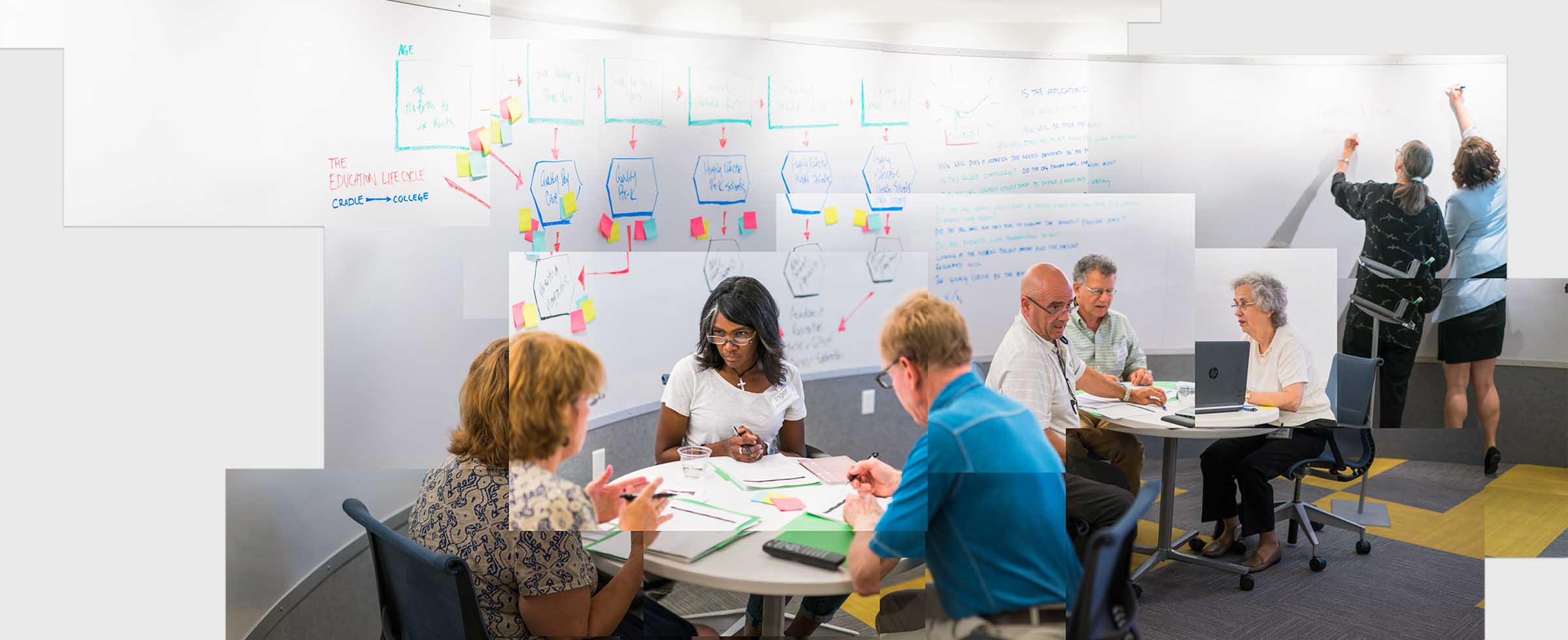Active listening

ON A COOL MARCH EVENING, a group gathered at the Millvale Moose, headquarters of the nonprofit New Sun Rising, for the first meeting of the New Philanthropic Leaders. Organized by the Center for Philanthropy, this lively group of 25- to 40-year-olds represents the next wave of philanthropy. Atypically generous, each donated $1,000 to a single pooled fund, which was matched by the Foundation — that’s more than double the average charitable gift of $481 that most millennials make in an entire year to all charities combined. Participants will also take part in a 10-month series of intensive sessions with community leaders to explore critical issues facing the region.
In October, the group will use the knowledge they’ve gained of evidence-based philanthropy to decide how best to distribute their grant-making pool of $26,000. They’ll also host a pitch party, which invites nonprofit leaders to share their best ideas in the hopes of generating excitement and additional financial support from the public.
But on this night, there were no decisions to make: this session was for listening as four nonprofit leaders described innovative philanthropic methods that go beyond writing a check. The panelists’ advice: listen to, learn from and collaborate with the nonprofit professionals who know their communities best.
Jordana Stephens serves on the Grassroots Grantmaking Committee run by Neighborhood Allies. She says she believes that grants to individuals exemplify the best practices of trust-based grantmaking, where donors give to the people and organizations on the ground doing what’s most needed in a community. Unlike most foundations, which give only to certified nonprofits, the Grassroots Grantmaking Committee provides mini-grants to individuals for projects. Last May, Stephens received $1,700 with Neighborhood Allies as the fiscal sponsor to run a block party to bring her community together.
“With grassroots grantmaking, accountability isn’t just to the fiscal sponsor but to my neighbors, the people I have known since I was in pigtails,” Stephens says. “That’s a heavy responsibility, particularly in a place like Pittsburgh where people know your brother, your sister, your grandmother. It has to be successful for all of them, too.”
Panelist Hilary Ferencak, coordinator at the Program to Aid Citizen Enterprise (PACE), encourages the New Philanthropic Leaders to invest in training for nonprofit staff so they have the tools needed to develop strong organizational and governance structures. PACE works with organizations serving economically disadvantaged people, particularly in African American and low‑income communities.
Nonprofit leaders apply to take part in PACE intensive capacity‑building programs focused on improving internal governance, leadership and financial management systems with the goal of growing sustainable organizations.
“It’s so important for donors to go beyond programmatic funding and instead approach their philanthropy as a conversation, where they ask nonprofits what their organizations need to succeed. Investing in capacity building helps nonprofits take that next step in their organizational evolution,” Ferencak says.
For some nonprofits, that evolution begins at New Sun Rising, where Scott Wolovich is the executive director. Founded in 2005, New Sun Rising is an incubator, funder and advisor rolled into one, serving both for-profit and nonprofit organizations. Its fiscal sponsor model provides administrative support — and pressure — to elevate an organization’s performance.
TIMELINE OF NEW PHILANTHROPIC LEADERS SESSIONS |
|||||
| March Kickoff meeting at New Sun Rising. |
April Deep dive into philanthropic best practices. |
May Design nonprofit grant applications and plan pitch party. |
August Select nonprofit finalists. |
November Pitch Party takes place and grants awarded. |
December Recap celebration and planning for next session. |
“We don’t just want to manage the books. We work with organizations that need help making a real change, creating efficiencies and serving as a mediator and broker for nonprofit collaboration, which can lead to funders investing more,” says Wolovich.
Wolovich, like Stephens and Ferencak, advocates for including affected populations in the development of solutions, especially for neighborhood revitalization efforts.
“Putting smaller communities at the center to benefit from the intellectual capital of the larger community creates transformational change not transactional change,” he says.
Entrepreneur and author Brian Burley recommends inspirational and authentic storytelling as a way for nonprofits to bring their missions to life. Burley’s recently published book, “YNGBLKPGH,” features open letters by 140 young black professionals to the next generation, illustrating diverse pathways to success.
“This book is 290 pages of proof that it is possible to achieve your dreams, that it is possible for young people to get the resources needed to achieve those dreams,” Burley says. “Possibilities lead to ideas. Ideas lead to plans. Plans lead to actions, and actions change lives.”
Center for Philanthropy staff member Emmie Calland hopes the discussion introduced the New Philanthropic Leaders to different giving models that show donors how they might achieve a “more than money” relationship with nonprofits. Stephens agrees.
“You need the people who are doing the day-to-day work, who are experiencing the success and the trauma around an issue, to connect to the people with the money,” Stephens says. “Then there can be a conversation about how to make things better for everybody.”
Original story appeared in Forum Quarterly - Spring/Summer 2018




